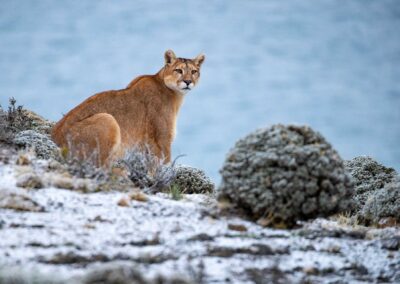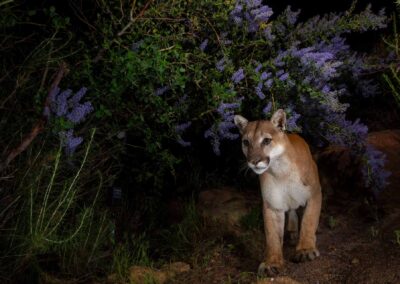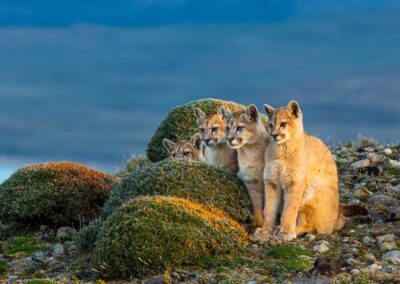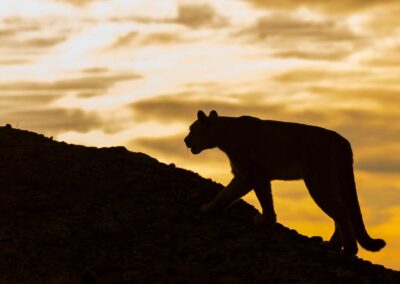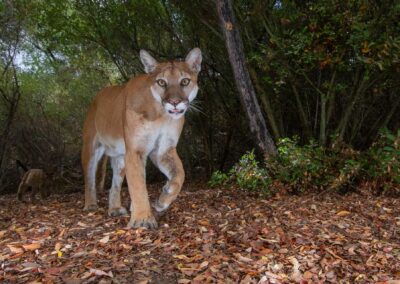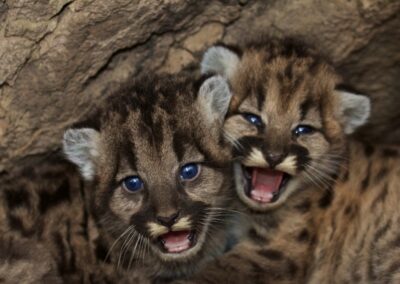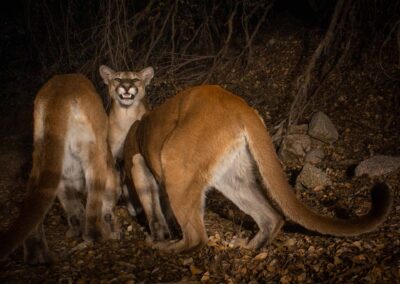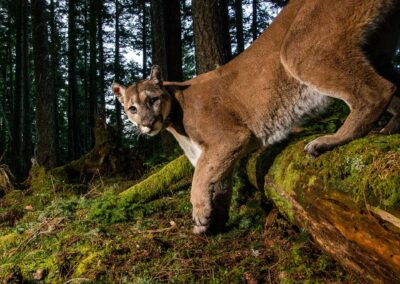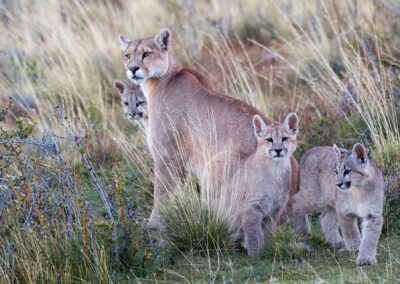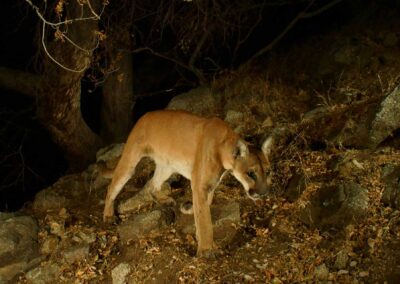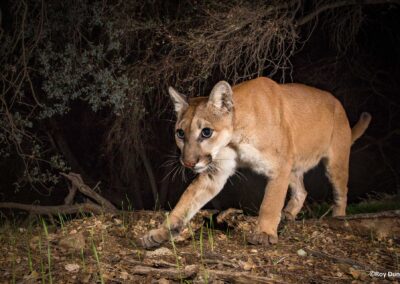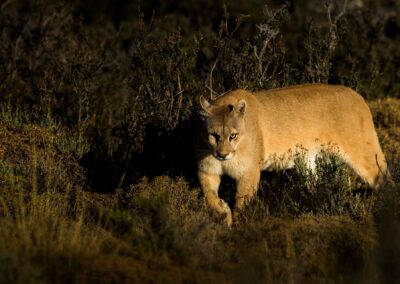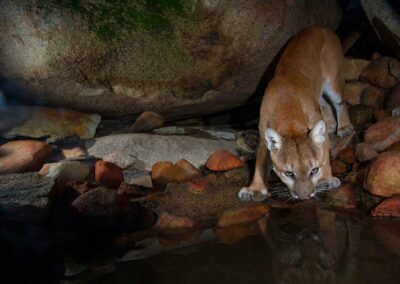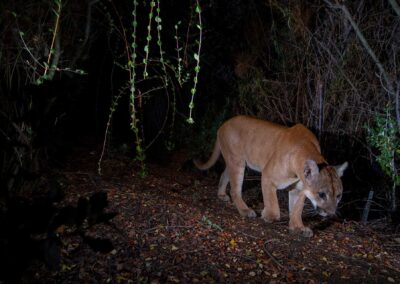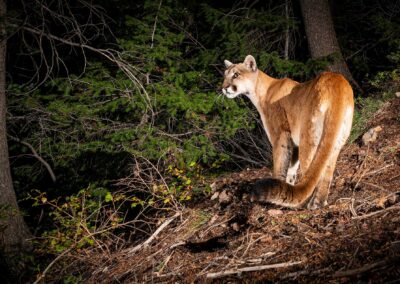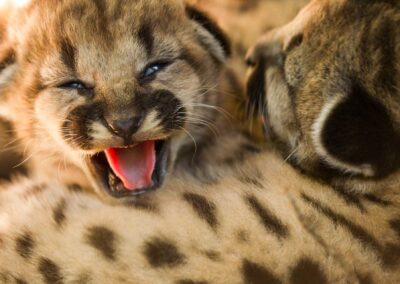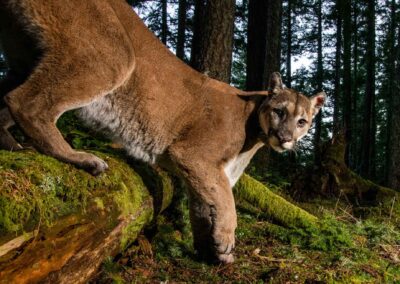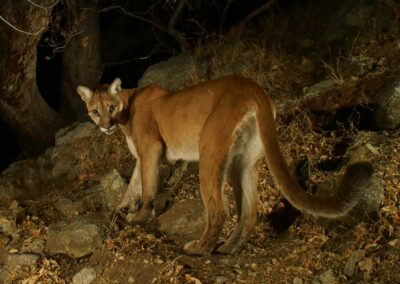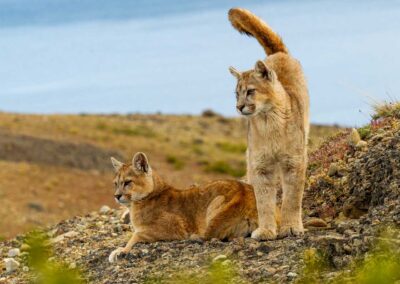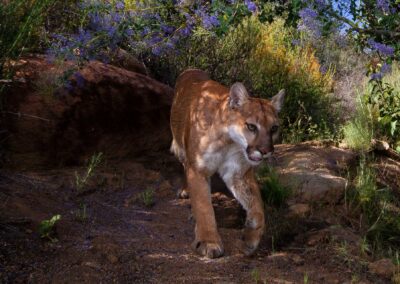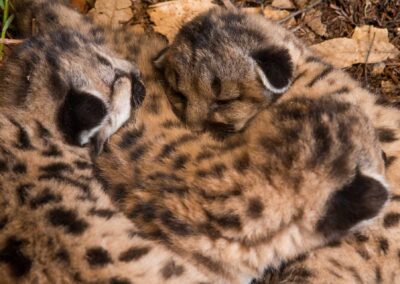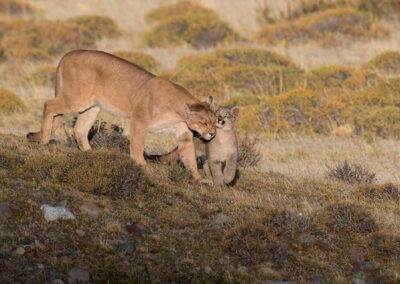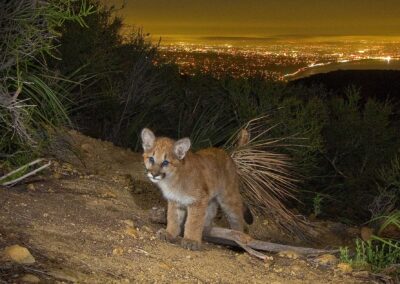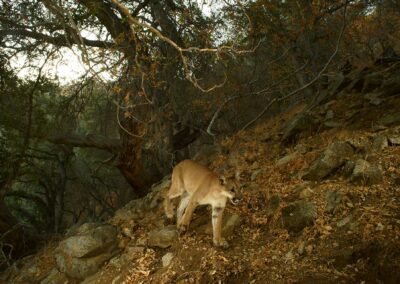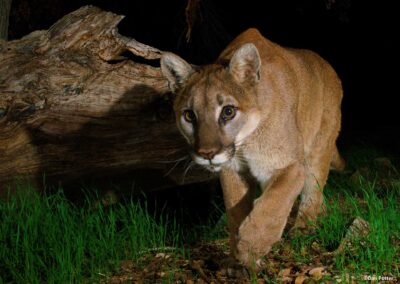All
About
Mountain
Lions
Photo by Dan Potter
Mountain lions are also known as pumas, cougars, or panthers. Seeing a mountain lion in the wild can be a thrilling and memorable experience, but sightings are rare due to their elusive nature.
How many mountain lions are there in the United States and where do they live?
The solitary and elusive nature of mountain lions makes them extremely difficult to count. Many lion populations are often estimated using a variety of methods and are often conducted by state agencies with methods that are not always peer reviewed. Due to this ambiguity, the Mountain Lion Foundation is unable to confidently estimate the current number of mountain lions nationwide.
There are breeding populations of lions in 16 states in the American West and Southwest. The Florida Panther represents the only known breeding population of lions east of the Mississippi River. That doesn’t mean you won’t see a mountain lion in other Eastern states though. Young male lions disperse hundreds to thousands of miles in search of new territory. Female lions stay closer to their birthplace. Some young cats travel vast distances through the Eastern U.S., but won’t settle down unless they find a female, making these males transient east of the Mississippi River.
What do mountain lions eat?
Mountain lions are obligate carnivores, meaning they only eat meat. Most of the time, they eat ungulates, mostly deer. Lions will occasionally eat elk, wild pigs, rabbits, raccoons, beavers, porcupines, rodents, bighorn sheep, coyotes, and other wildlife species.
Do mountain lions prey on pets and livestock?
Rarely. Domestic sheep, goats, and chickens are more vulnerable to mountain lion predation than cattle and horses, but these smaller livestock are also more easily protected. Securing backyard sheep, goats, llamas, pigs, chickens, and other fowl in predator proof enclosures from dusk to dawn will reduce livestock loss. Other lion deterrents include livestock guardian dogs, electric fences, and motion sensor lights and alarms.
When is mountain lion breeding season?
Mountain lions are unusual among carnivores because they breed and give birth at any time of year. However, studies in North America indicate that most mountain lions give birth during the summer months. On average, females have their first litter at 2 1/2years of age, and they generally breed every 2 years thereafter. Females move their nursing kittens frequently to new den sites for protection and to improve access to prey.
Do mountain lions overpopulate?
No. Mountain lion populations self-regulate due to lions’ territorial behavior, limitations from prey, and their prey’s limitations to forage access. There are usually about 2 adult lions per 100 square miles. Males may kill one another for territory, food, or a mate. The greatest threats to stable lion populations are trophy hunting, habitat loss, vehicle strikes, uncontrolled wildfire, drought, rodenticides, and disease.
Will killing more mountain lions decrease conflicts with pets and livestock?
No. Studies that have tested killing more mountain lions through hunting or depredation kills showed that killing mountain lions either did nothing or made conflicts worse. There are multiple schools of thought for why this happens, including the “troubled teen” hypothesis. It states that killing an adult lion disrupts the social structure of a local population, leaving a vacancy for younger lions looking to occupy an empty territory. Thus, killing a mountain lion may result both in a temporary increase in the number of local mountain lions, as well as an increase in pet and livestock losses.
Mountain Lions in Nevada
- The state of Nevada is home to 3,400 mountain lions according to a 2015 population estimate. Mountain lions can be hunted in the state; however, trapping is prohibited. Unfortunately, each year mountain lions are caught in traps set for other species, resulting in injuries.
- Classified as a game animal.
- Hunting is open year-round.
- Hunters are allowed to use dogs to hunt lions.
- Annual hunting: Nevada sets high annual quotas of around 250 lions
- The state of Nevada encompasses 109,826 miles of land. Of this the Nevada Department of Wildlife (NDOW) estimates that approximately 50,000 square miles, roughly 45 percent of the state, is suitable mountain lion habitat.
- Estimated population: NDOW has put forth several estimates on the number of mountain lions residing in the state. Based on modeling that considers past mortality trends and recruitment rates from mark-recapture studies, NDOW’s 2008 status report estimates somewhere between 2,500 and 3,500 mountain lions statewide. More recently, Drs. Peter Mahoney and John Benson from University of Nebraska-Lincoln were contracted to update Nevada’s mountain lion population model. This effort resulted in an estimate of 3,400 mountain lions.
ACT NOW
Help protect majestic mountain lions from unregulated trapping

